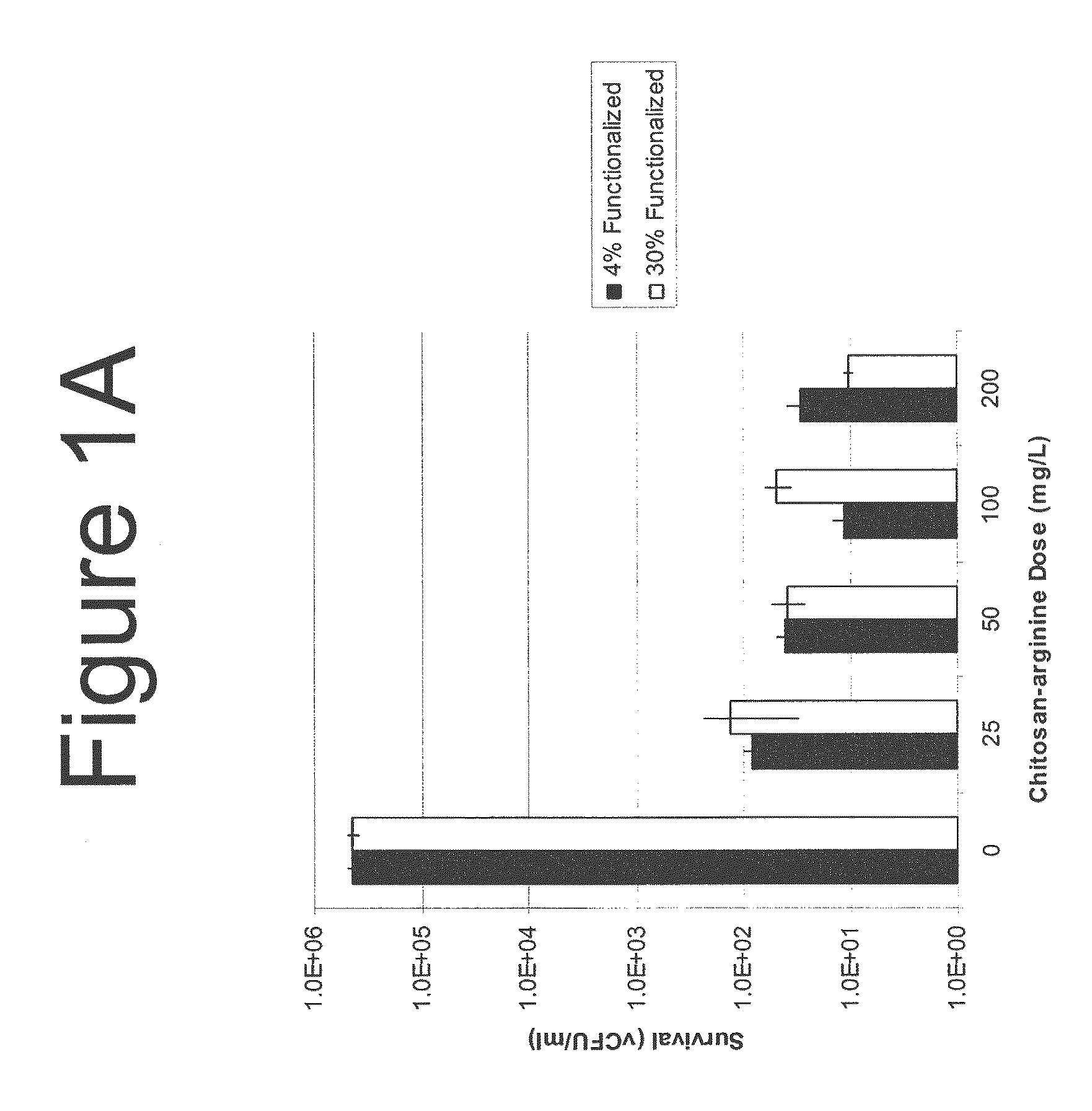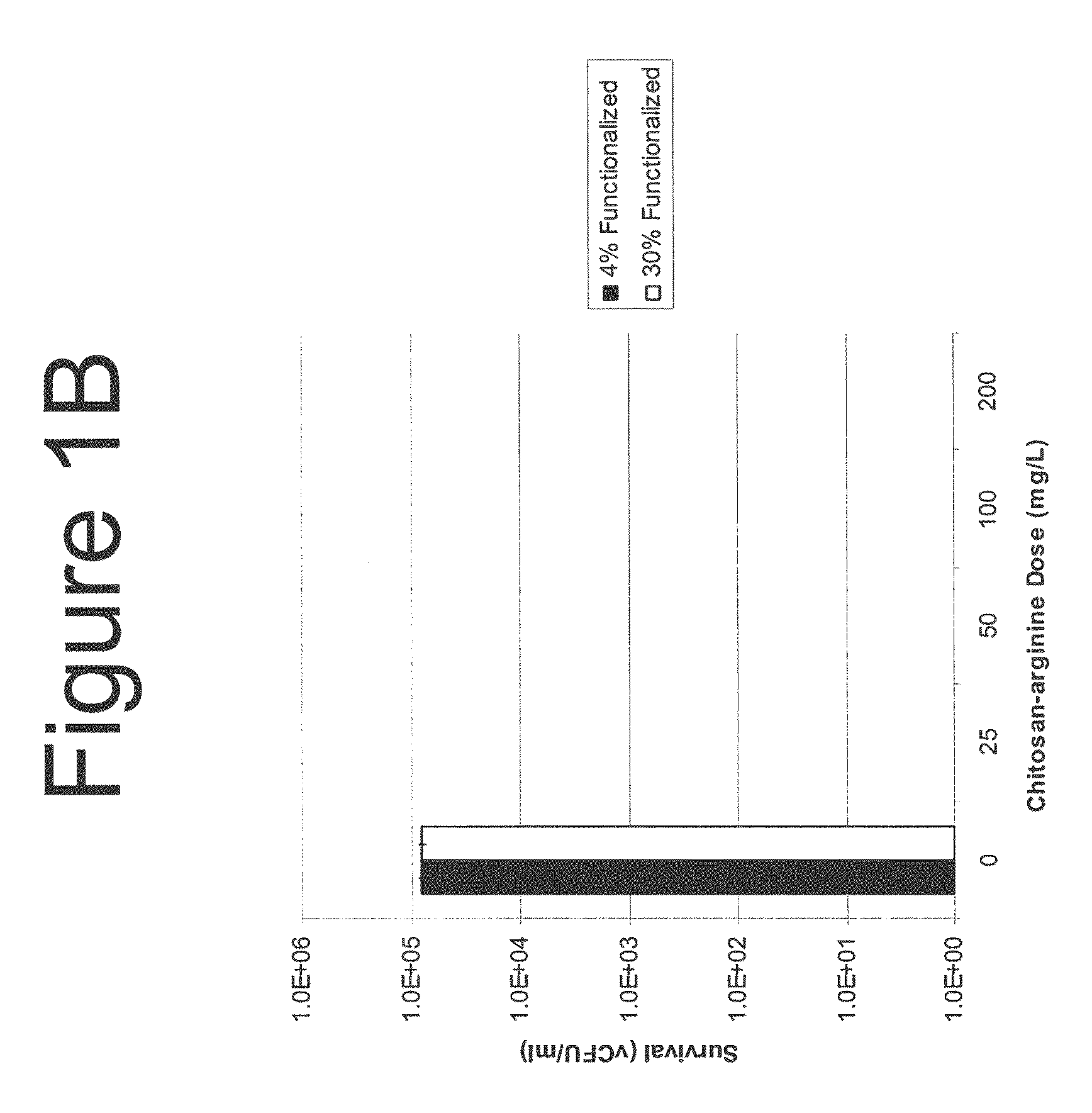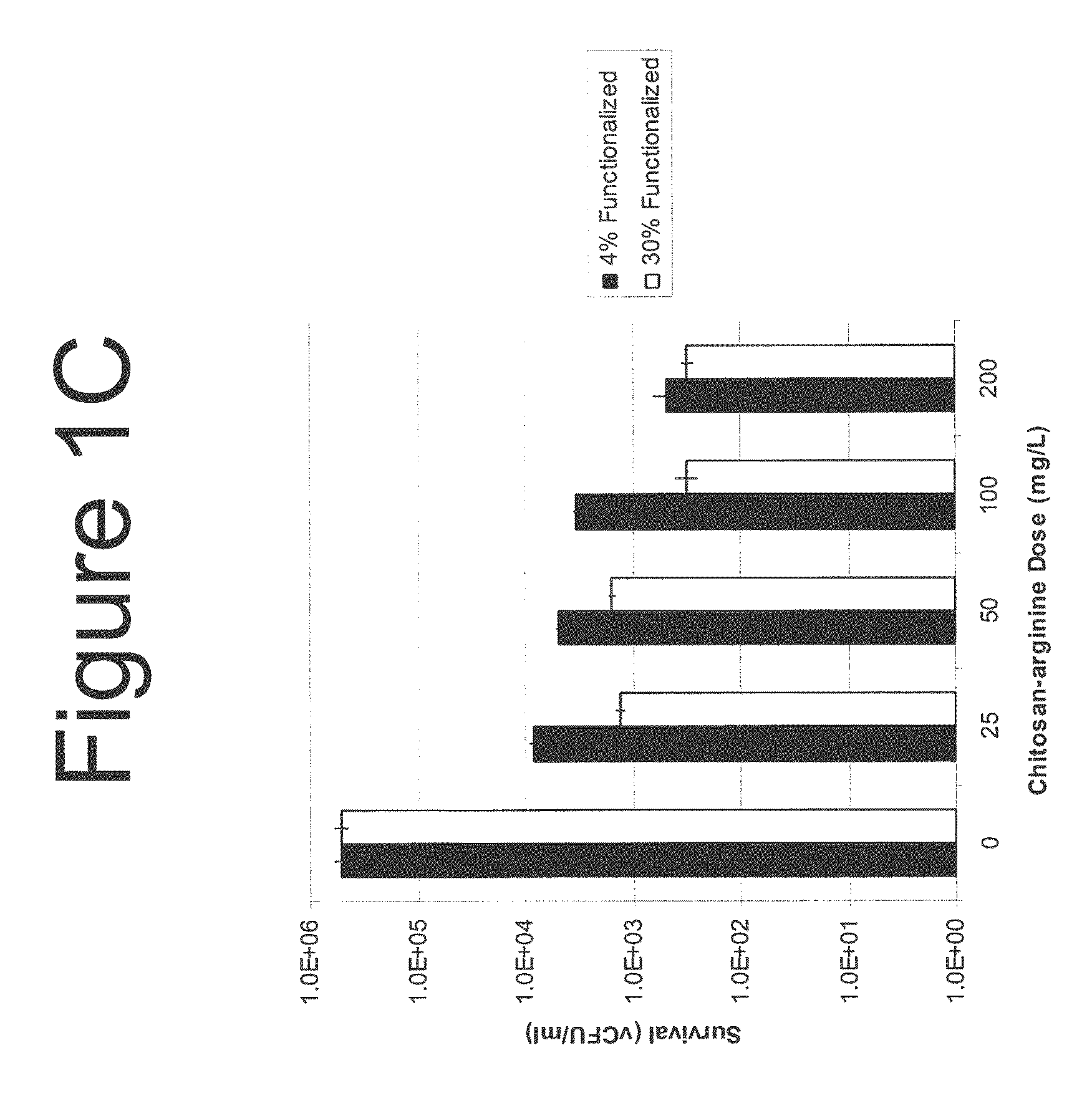Methods and compositions for the prevention of and treatment of infections utilizing chitosan-derivative compounds
a technology of chitosan and derivative compounds, applied in the direction of biocide, antibacterial agents, animal husbandry, etc., can solve the problems of increasing multi-drug resistance, increasing the risk and magnitude of infection in traumatic and surgical wounds, and nearly 100,000 deaths annually, so as to reduce prevent the spread of staphylococcus infection
- Summary
- Abstract
- Description
- Claims
- Application Information
AI Technical Summary
Benefits of technology
Problems solved by technology
Method used
Image
Examples
example 1
Staphylococcus aureus from Culture Strains, Isolates and Clinical Isolates is Killed by Chitosan Derivatives
[0701]Bacterial cultures were maintained as frozen stocks in a −80° freezer until use. The culture was thawed, and inoculated from the stock bullet at a 1:100 dilution into fresh sterile Todd Hewitt broth. The culture grew at 37° C. with shaking for 18 h in a G-76 water bath incubator. Culture OD (595 nm) is measured and bacteria were pelleted. The cells were resuspended at OD595 0.05 in 100 mM sodium acetate at pH 7.0, and 10-fold dilutions of the culture were pipetted in 100 μl aliquots into a sterile, clear polystyrene 96-well round bottom microtiter dish. After 1 h of incubation at room temperature, the culture was washed with phosphate buffered saline, washed again with Todd-Hewitt broth and resuspended in the same volume of broth Microtiter plates were centrifuged and culture fluid was removed gently with a multichannel pipetter. The plate was prepared as described previ...
example 2
Chitosan-arginine as a Spray Prevents MRSA Growth
[0708]FIG. 4 shows the prevention of bacterial and biofilm growth on surfaces. Studies were completed to assess the response of methicillin-resistant staphylococcus aureus (MRSA) to a surface coating of chitosan-arginine. Chitosan-arginine 28% functionalized with 23.8 kDa (% DDA 83, PDI 1.54) in a solution of 90% ethanol in water was deposited with varying surface coverage to polystyrene surfaces (12-well plate) and allowed to dry completely overnight. Subsequently, 1×106 bacteria (200 μL of 5×106 bacteria / mL) of and MRSA MW-2 were deposited on the surface and recovered after 4 hour or 24 hours. The surviving bacteria were plated and counted. Note that even at very low surface coverage (2), nearly complete sterilization MRSA is observed for these large bacterial challenges. FIG. 4 shows a dose response of MRSA MW-2 to a pretreatment of very low amounts of chiotsan-arginine on a surface. This prophylactic use of chiotsan-arginine is ef...
example 3
Chitosan-arginine Reduces MRSA in Preformed Biofilms
[0709]The activity of chitosan-arginine (35.2 kDa, 30% functionalized, % DDA 83, PDI
[0710]1.71) against MW-2 biofilms was assessed using a CDC biofilm reactor. The biofilms were grown in polycarbonate wells. After 3 d of growth in a stirred, aerated batch culture, the biofilms were removed and treated with 100 μg / ml chitosan arginine in water. Alternatively, untreated samples were incubated alongside treated samples in water. All growth and treatment took place at room temperature. After exposure, samples were removed from treatment, and evaluated by plate counting and viability staining as described above. The plate counts were accomplished by scraping the outer surface of the coupons with a flat end stock stick. After thorough scraping, the stick was placed in 500 μl sterile Millipore water. The samples were diluted in phosphate buffered saline, plated on agar, and counted for growth of colony forming units. The susceptibility of...
PUM
 Login to View More
Login to View More Abstract
Description
Claims
Application Information
 Login to View More
Login to View More - R&D
- Intellectual Property
- Life Sciences
- Materials
- Tech Scout
- Unparalleled Data Quality
- Higher Quality Content
- 60% Fewer Hallucinations
Browse by: Latest US Patents, China's latest patents, Technical Efficacy Thesaurus, Application Domain, Technology Topic, Popular Technical Reports.
© 2025 PatSnap. All rights reserved.Legal|Privacy policy|Modern Slavery Act Transparency Statement|Sitemap|About US| Contact US: help@patsnap.com



